Collection: Sharpening Instructions

Sharpening Instructions
DMT sharpeners enable woodworkers, professionals and DIY’ers of all skill levels to keep their tools in top condition. From chefs to skiers to hunters enjoy effortless, clean cuts with a DMT sharpened tool.
Click the image for related products to sharpen your tool today:
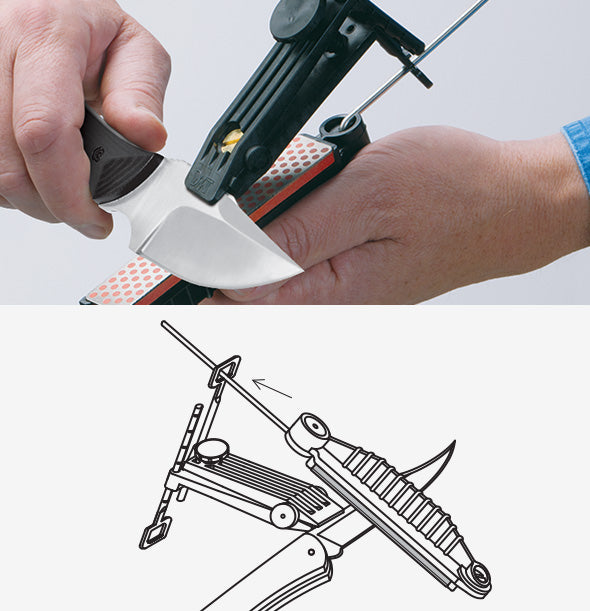
Conventional Knives (<9")
Suggested Sharpener: Aligner™ Easy Edge-Guided Sharpener (shown). Also, MagnaGuide™ Guided Sharpener, Mini-Sharp®, Diafold®, Diamond Whetstone™, DuoSharp®, Dia-Sharp® or Diamond Whetstone™
- Set the 2 opposing clamp eyehooks to the angle of knife bevel, 20° for most edges.
- Attach clamp perpendicular to spine of blade.
- Slide guide rod through eyehook to position sharpener against the bevel of the blade (as shown).
- Lightly stroke away from the body, drawing the knife forward and across the sharpening surface.
- Flip and repeat, using the opposite eyehook with guide rod to maintain the proper bevel angle.
- Progress to finer grits to achieve desired result.
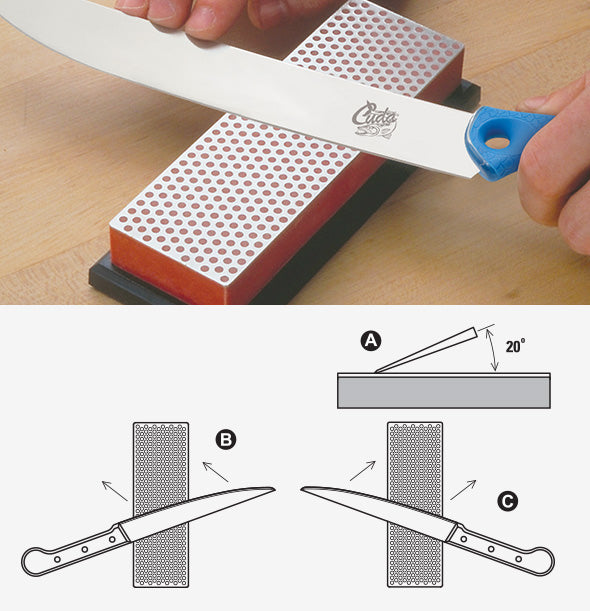
Larger Knives (>5")
Suggested Sharpener: Diamond Whetstone™ (shown). Also, DuoSharp®, Dia-Sharp®, Diafold® or Diamond Steel
- Establish proper angle of bevel, 20° for most edges (A).
- Lightly stroke away from the body, drawing the knife forward and across the sharpening surface (B and C).
- Progress to finer grits until desired result.
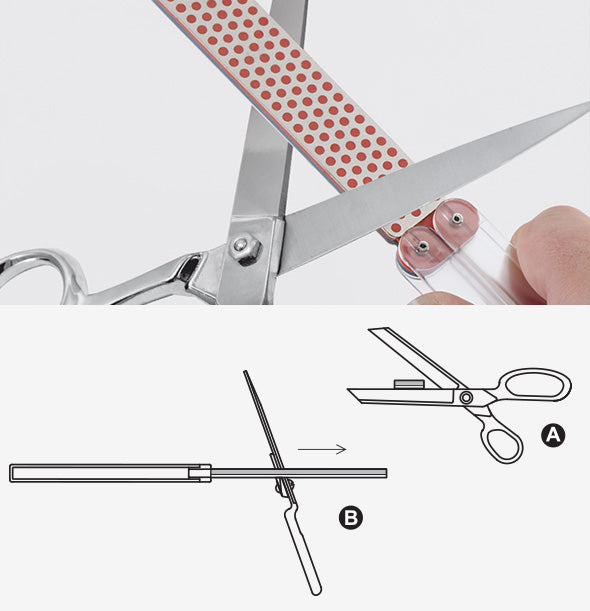
Scissors
Suggested Sharpener: Diafold® (shown). Also, Diafold® Flat File, Mini-Hone® or Mini-Sharp®.
- Align sharpener flush with bevel (A).
- Stroke smoothly toward outside of scissors (B).
- Rotate scissors 180° and repeat.
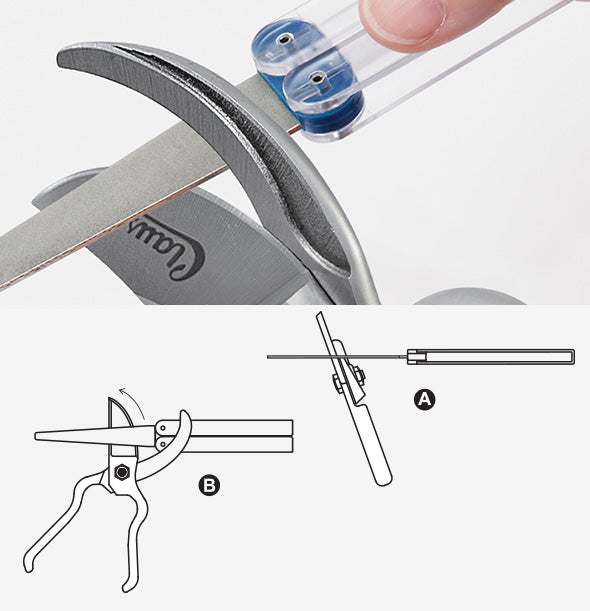
Pruners
Suggested Sharpener: Diafold® Flat File (shown). Also, Diafold®, Mini-Hone® or Mini-Sharp®.
- Align sharpener flush with bevel (A).
- Stroke into the bevel edge (B).
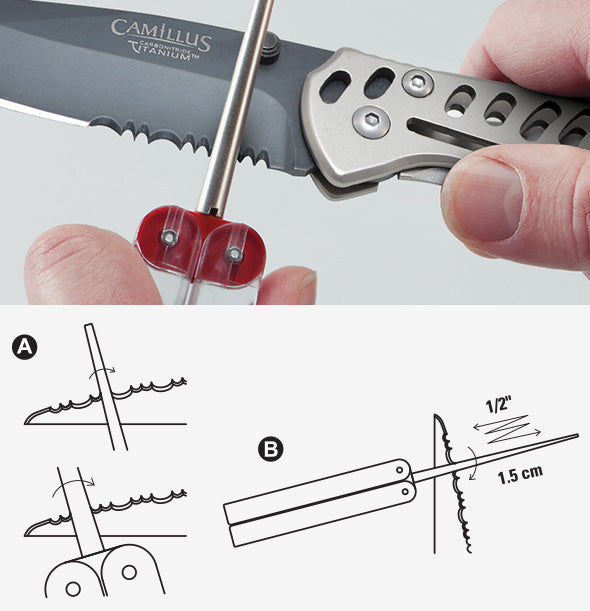
Serrated Knives
Suggested Sharpener: Diafold® Serrated Sharpener (shown). Also, Aligner™ Guided Systems with Serrated Accessory
- Match diameter of tapered rod to the size of the serration (A).
- Keeping the sharpener flush with the bevel, make half-inch strokes with a twisting motion (B).
- Repeat for each serration.
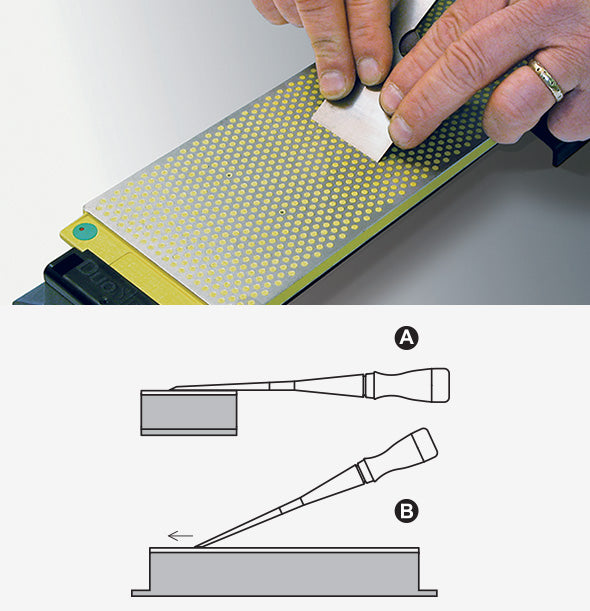
Chisels & Planes
Suggested Sharpener: DuoSharp® (shown). Also, Dia-Sharp® or Diamond Whetstone™.
- On new or damaged edges, flatten back first (A), working from coarser to finer grits.
- Establish proper angle of bevel using fingers or a sharpening jig to keep the bevel flat on stone.
- Make light, forward strokes until sharp (B).
- Finish with one light stroke on the back side to remove burr.
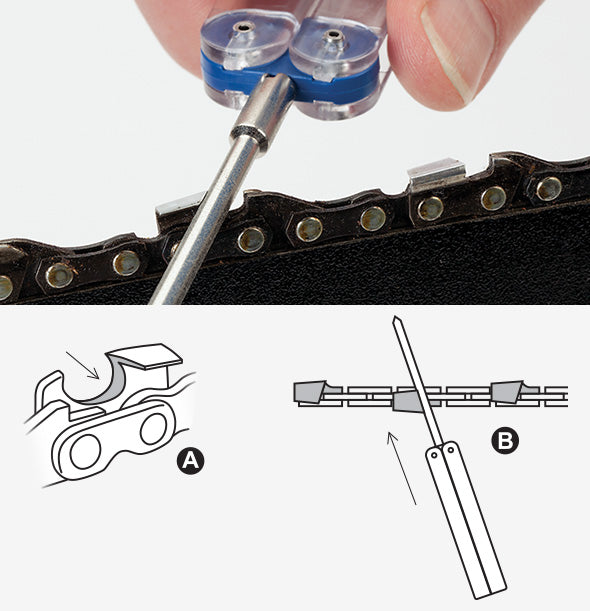
Chainsaws
Suggested Sharpener: Diafold® Chainsaw Sharpener.
- With chain on saw, mark first tooth with marker.
- Match sharpener angle against the concave face of a right-facing cutter (A).
- Stroke inward on each right-facing cutter (B).
- Flip and repeat for all left-facing cutters.

Flattening / Lapping
Suggested Sharpener: Dia-Flat® Lapping Plate.
- With a soft pencil, fill the entire surface of the stone to be flattened with a series of x-marks.
- Either submersed in a pan of water or under a running tap*, rub the surface to be flattened against the Dia-Flat® Lapping Plate.
- Check the x-marks periodically so you do not remove more material than necessary. When there are no x-marks visible, your surface is finished.
*NOTE: Never attempt to flatten a stone in a sink that has a garbage disposal as the slurry can damage the disposal’s bearings.

